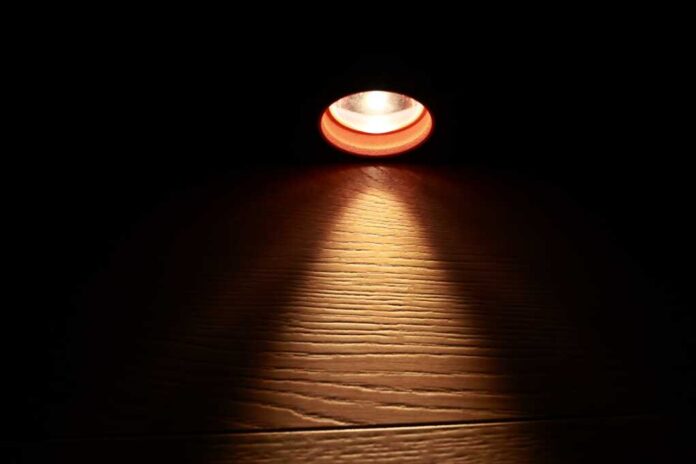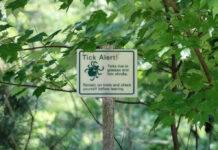
Adjusting your evening light exposure can significantly impact your sleep quality, potentially transforming restless nights into rejuvenating slumber by working with your body’s natural rhythms rather than against them.
At a Glance
- Light is the most powerful external factor affecting sleep quality, directly influencing your circadian rhythm and melatonin production
- Evening exposure to bright light, especially blue light from electronic devices, can delay sleep onset by suppressing melatonin production
- Even dim light during sleep can disrupt health by increasing heart rate and insulin resistance
- Gradually dimming lights in the evening helps signal to your body that it’s time to prepare for sleep
- Creating contrast between daytime brightness and evening darkness helps maintain proper sleep-wake cycles
How Light Controls Your Sleep Cycles
Your body’s internal clock, known as the circadian rhythm, relies heavily on light cues to determine when you should be awake or asleep. This biological timing system has evolved over thousands of years to align with natural daylight patterns, but modern lighting has disrupted this delicate balance. Throughout the day, exposure to bright light signals wakefulness and alertness, while darkness triggers the production of melatonin, the hormone responsible for making you feel sleepy.
The Evening Light Problem
Unlike our ancestors who experienced a gradual transition from daylight to darkness, modern humans often maintain bright artificial lighting well into the night. This pattern confuses the body’s natural timing system. Research shows that exposure to bright light in the two hours before bedtime shifts both sleep and wake times later, making it harder to fall asleep at your intended bedtime and more difficult to wake refreshed in the morning.
Blue light, emitted from electronic devices like smartphones, tablets, computers, and LED lighting, poses a particular challenge. This specific wavelength of light is especially effective at suppressing melatonin production, with studies confirming it can significantly delay sleep onset. Many Americans further complicate matters by lacking sufficient bright light exposure during daytime hours, creating an imbalance that further disrupts sleep patterns.
Nighttime is when your body heals, repairs, and detoxifies.
Optimize your Friday night routine for better sleep:
1️⃣ Turn off screens 1 hour before bed to lower blue light exposure.
2️⃣ Breathe deeply: Practice 4-7-8 breathing to activate relaxation.
3️⃣ Take magnesium: Supports…— Gary Brecka (@thegarybrecka) January 25, 2025
Creating a Healthier Light Environment
Improving your sleep through mindful light management requires attention to both daytime and evening habits. During the day, seek bright natural light, especially in the morning, to help set your circadian rhythm correctly. Morning sunlight exposure is particularly effective at promoting alertness and energy while preparing your body for better sleep later. For those with limited access to natural light, consider bright indoor lighting during morning and afternoon hours.
As evening approaches, begin gradually reducing light intensity and shifting toward warmer light tones. Dimming lights throughout your home signals to your body that day is ending and sleep preparation should begin. Replace bright overhead lighting with softer lamps, especially in areas where you spend your final hours before bed. Many devices now offer night mode settings that reduce blue light emission, and blue-light blocking glasses can provide additional protection during evening hours.
The Darkness Factor
Creating an environment that transitions from brightness to darkness helps your body produce melatonin naturally. When preparing for bed, minimize or eliminate all light sources in your bedroom. Consider blackout curtains to block street lights, remove or cover electronic device indicators, and use dim nightlights with red or amber tones if necessary for nighttime navigation. Studies have shown that even dim light during sleep can affect health by increasing heart rate and potentially contributing to insulin resistance.
The most effective sleep environment is one that mirrors our natural evolutionary environment: bright days and dark nights. By mindfully managing your light exposure throughout the day and evening, you create the conditions that allow your body’s natural sleep mechanisms to function optimally. This approach not only improves sleep quality but supports overall health by maintaining proper alignment of your circadian rhythms with your daily activities.
Struggling with Sleep?
Let’s Fix That.If you had a rough night, tossing and turning, waking up groggy, or feeling drained today—your sleep cycles need support.
One key player? Melatonin.
✔️ Regulates sleep-wake cycles (naturally produced, but declines with age)
✔️ Powerful…— Michael Morelli (@morellifit) February 14, 2025


















